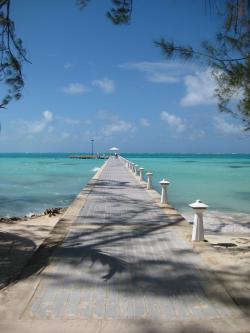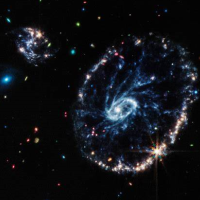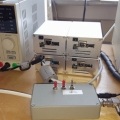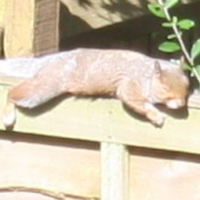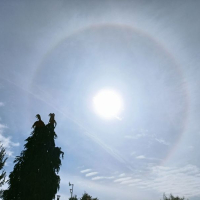jks
About
- Username
- jks
- Joined
- Visits
- 36,722
- Last Active
- Roles
- Member, Administrator, Moderator
- Points
- 670
Reactions
-
What an impressing radio the KiwiSDR really is.
-
v1.802
From the CHANGE_LOG file:
v1.802 February 7, 2025
Added support for multiple iframe instances, up to 16. (thanks VK3KHZ)
Admin > Extensions > iframe has a new button called "populate with standard entries" which
will add 6 new iframe entries in addition to the new "DX spots" default added last release.
They are: solar conditions, K-index, HF propagation, lightning map, and aurora.
Fixed bug preventing change of proxy host name in certain cases.
-
Preset HPF setting [fixed in v1.454]
v1.453,454 May 14, 2021
Added default passband adjustment to admin page, config tab.
As each passband parameter field is changed (low, high, center, width) the other
fields will be automatically adjusted. So if you know you want a USB filter
with a low frequency of 300 Hz that is 3300 Hz wide just enter those two fields
and the high and width values will be derived. An error message will appear if
you attempt to define an invalid passband.
The former "CW offset" field has been removed. To set your desired CW offset
simply set the default passband center frequency of the CW/CWN mode passbands
to the offset value. E.g. If you want to hear a 1000 Hz tone in the CW modes
set the passbands to have a 1000 HZ center.
After the passband is changed on the admin page, existing user connections will have
to reload the page to get the new passband values.
-
v1.456,458,459
From the CHANGE_LOG file:
v1.455,456 May 19, 2021
Admin page
Config tab: Added button to reset passband fields to default values.
Connect tab: Improved proxy setup UI.
Right-click menu: Added "snap to nearest" mode. Setting is remembered/restored per Kiwi
visited just like freq/mode etc. Waterfall cursor differs when snap mode active.
When snap is active the freq step keys (j/i, left/right arrow keys) are modified so
the ctrl/alt-key steps the smallest amount and the unmodified key steps the same
amount as the snap (e.g. 9/10 kHz on MW). Usually the unmodified key step the
smallest amount.
Changes to more easily support general (even non-SDR) FPGA development.
-
v1.441: camping fixes, AGC CW threshold, audio FFT extension fixes, misc fixes
From the CHANGE_LOG file:
v1.441 March 15, 2021
Audio camping bug fixes:
URL redirect now respects URL camp parameter. More work needed for other cases.
Audio now plays on Safari.
Added separate CW AGC threshold control.
Typically a lower AGC threshold is required for very narrow passband settings to
avoid low sensitivity. Since narrow passbands are most often associated with the
CW/CWN modes it was decided to add a separate AGC threshold control active only in
those modes. The original threshold control applies to all other modes.
The two are stored in their own separate browser cookies.
Fixed bugs in the Audio FFT display (the one that appears in 8-channel mode when more
than two channels are busy, or if the URL "no_wf" parameter is given):
The LSB passband is drawn in the same place as the actual FTT output.
The FFT display bins were flipped to be correct (i.e. low vs high frequency).
Autoscale mode works better than before.
Disabled compression ("comp") button in DRM/SAS/QAM modes since it has no meaning
and effect in these modes.
Fixed shift-click in SWBC bands not selecting nearest 5 kHz boundary.
Fix long audio latency on browsers that display "Click to start OpenWebRX" overlay.
-
v1.821
From the CHANGE_LOG file:
v1.821 August 25, 2025
Fixed frequency memory icon behavior on mobile devices. (thanks Gary)
Admin GPS tab:
Fixed LO IQ PLL graph heading channel number. (thanks N2CWV)
On RSSI graph added comment that only green bars mean sat is being tracked.
Added AJAX/JSON interface to retrieve GPS data. (thanks N2CWV)
Accessible from the local network ONLY.
See: kiwisdr.com/info/#id-urls
-
v1.812
-
v1.811
From the CHANGE_LOG file:
v1.811 May 29, 2025
Web server:
Return connection error until local IP known so local-IP exemption works. (thanks Palomar)
Don't send Content-Length header since chunked encoding used. (thanks G7GSF)
Don't apply admin shortcut keys when control/option/meta modifier keys used. (thanks F5LFE)
SNR measurement now works even if admin control tab "disable waterfalls" is set. (thanks VA3ROM)
When antennas are switched an auto aperture measurement is made, if enabled. (thanks jimjackii)
-
v1.803
From the CHANGE_LOG file:
v1.803 February 14, 2025
Added admin password reset scheme. See KiwiSDR forum for discussion.
Iframe extension
Show all 16 instances in user extension menu. (thanks VK3KHZ)
Prevent duplicate menu names from being setup. (thanks Steffen)
SSTV extension
Added support for modes:
PD: PD120 (used by ISS) PD160 PD180 PD240 (but not PD290)
Robot: R12
Wraase: SC60
Pasokon: P3 P5 P7
FAX480
Fixed bug preventing proxy client start if not running in certain situations.
-
v1.700,701
This will be the last update for a while. I'm taking some time off to reassess my options.
From the CHANGE_LOG file:
v1.700 September 17, 2024
User interface:
Adjusting the passband edges should now work in most cases on mobile devices.
If it doesn't remember that there are other ways to adjust the passband including sliders
on the audio tab.
When adjusting the passband edges if the cursor wanders above or below the frequency scale
adjustment will continue to work. However the tooltip displaying the passband numeric
values continues to only appear when the cursor is positioned over the passband edge.
Remember that you can only adjust the edges when zoomed in far enough that the passband
color is green instead of yellow.
On narrow screen devices top bar now scrolls horizontally so all items can be accessed.
Mobile devices: sliding the passband to the screen edges causes the frequency scale to pan.
FT8/WSPR:
Added QO-100 satellite frequencies to extension and autorun menus.
Added FT8/WSPR V/UHF DX label entries to community database.
When the frequency offset is setup for operation with a greater than 1 GHz downconverter
the frequency entry box overflows due to the extra digit(s) displayed. There wasn't really
a good solution for this. Except that now if the cursor starts out inside the box the
keyboard left/right arrow keys will scroll left/right across the digits. As opposed to
tuning the current frequency as the left/right arrow keys normally do.
ALE extension:
Added "UN MINURSO" to milcom frequency list. (thanks M0HGK)
Added "MOROCCAN AF/Civil/Police/Navy" services to milcom frequency list. (thanks Mark W)
Admin interface:
The top bar (tab selection) and any status/error messages are now fixed at the top of the
page and no longer participate in any scrolling. This eliminates, for example, the page
"jumping back" to the top when you change a setting that requires a restart.
Config tab:
New menu "Frequency scale presets" has some pre-defined values that automatically puts
the correct entry in the "Frequency scale offset" field. For example, the menu entry
"144 => 28 (2m)" puts the value 116000 in the offset field which would map 144-148 MHz
to 28-32 MHz (assuming 32 MHz mode selected). We can add to this menu as necessary.
Network tab:
Better user interface behavior during "DHCP/static" and "Auto add NAT" changes.
Extensions tab:
WSPR option "Log spot debug info?" now produces a correct debug message in the log.
For example, WSPR UPLOAD: wsprnet.org said: "1 out of 1 spot(s) added"
